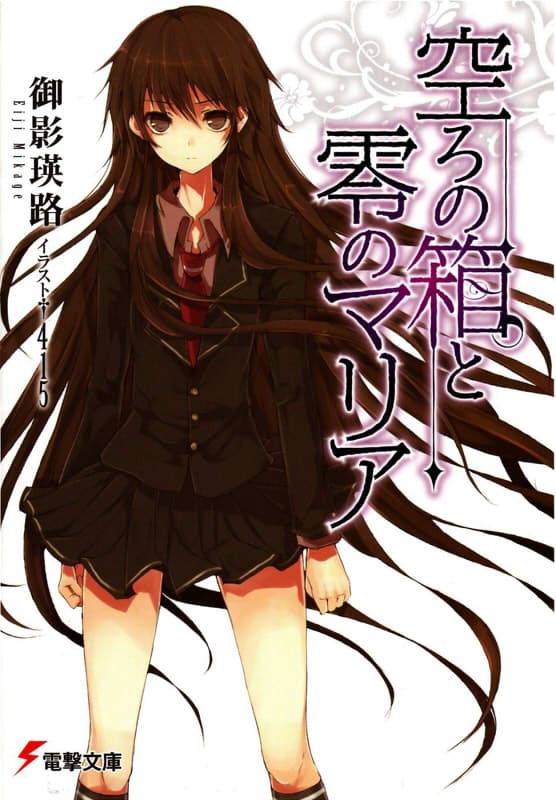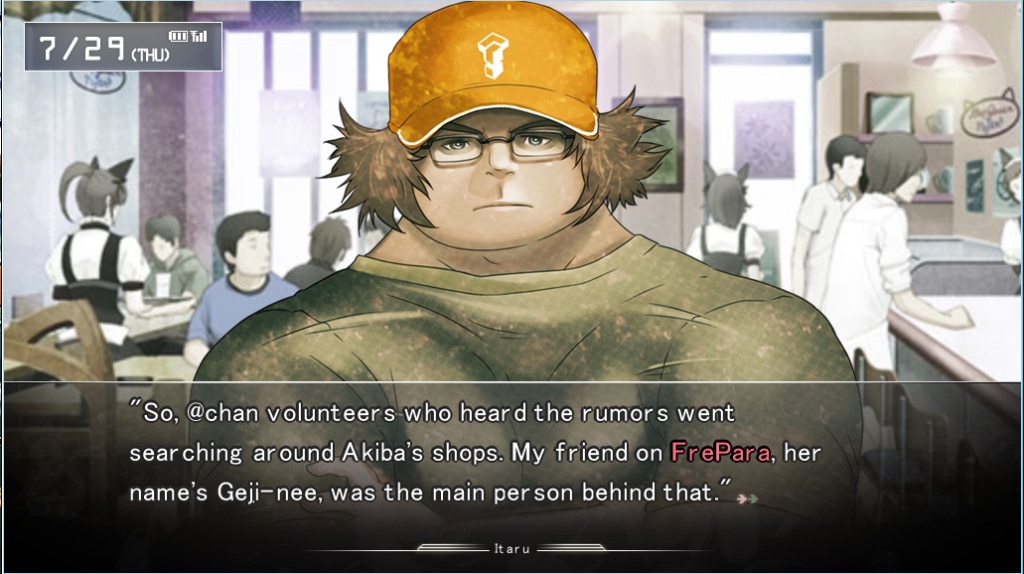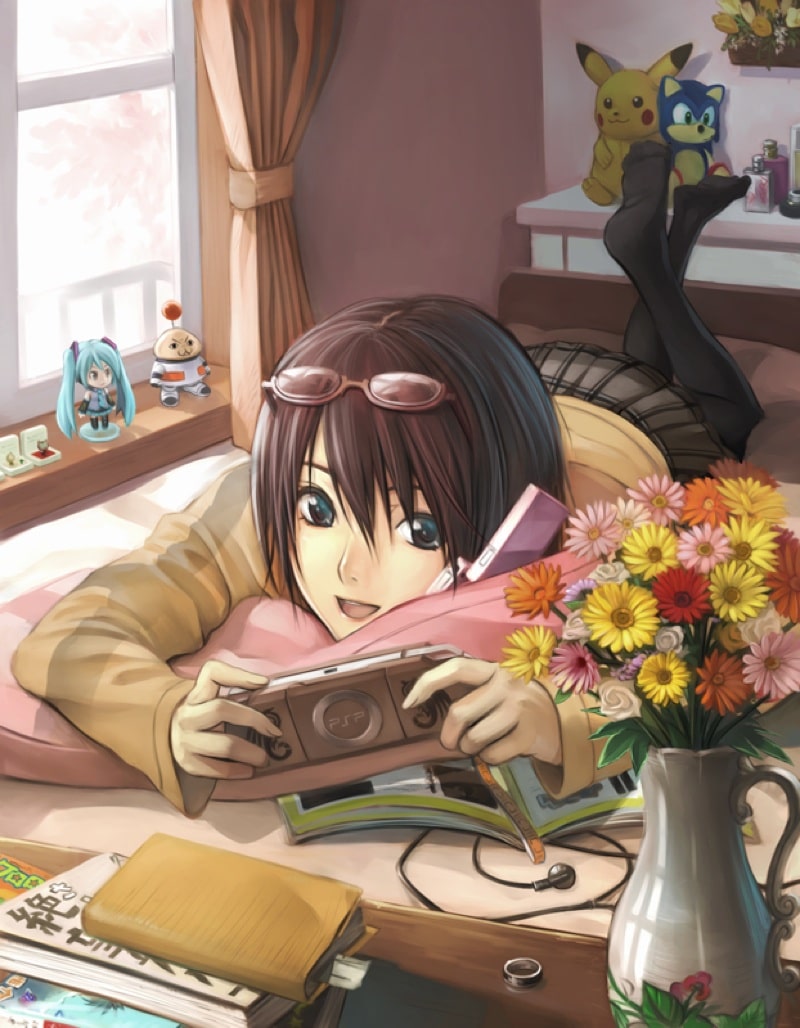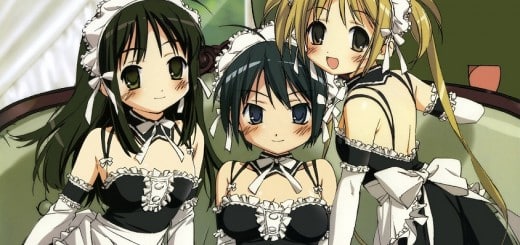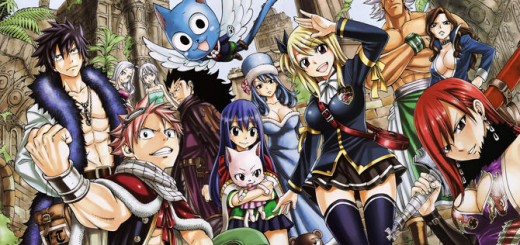What Are Visual, Light, Web Novels And Eroge?
Anime really stands out. But because anime is so easy to watch and get access to, it overshadows some other forms of creative media which, in my opinion, can be much more interesting than animated video – such as cellphone, web, light, and visual novels, and also eroge (ha..ha..). Not only that, these other media formats are often the original source of anime plots in the first place, having been adapted because of their amazing popularity. For example, it would be a tragedy to have watched Fate Stay Night without reading its visual novel.
The first non-TV form that pops into mind is manga. And of course manga is great, but there many other types of interesting media not as popular in the west – Cellphone Novles, Web Novels, Light Novels, and Visual Novels. You may have heard of a few of them, but I’ll touch on some of the finer details.
Cellphone Novels
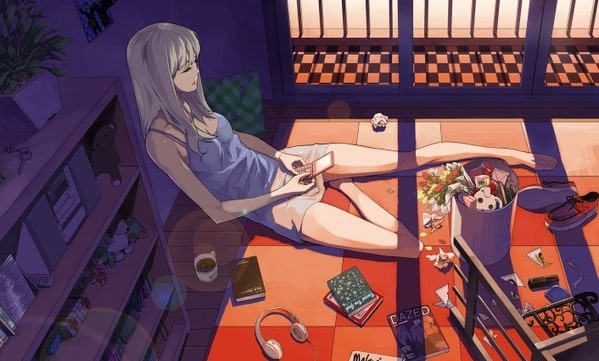
Let’s start from the basic of all basic forms of modern storytelling: 携帯小説 (keitai shousetsu) which literally translates to “Cellphone Novel”. As the name suggests, cellphone novels were traditionally written using cellphones and are about 70-100 words on average for easy reading on older phones. Similar to the idea of Twitter’s 140 character limit, the short length of each chapter forced authors to write in such a way that would keep readers hooked while conveying strong emotions.
Not only that, but because each chapter is normally written on a whim due to the portability of the cellphone, the number of twists and turns are exponentially higher because of limited planning and foresight. This may be why adaptations of cellphone novels are well suited to dramas and provide interesting stories in other media forms. Check out this video featuring Takatsu, one of the first western cellphone novel writers.
Publishing Frequency
Cellphone novels are also much easier to tune into vs web or visual novels because of the small time investment involved. Chapters are released in small bits and the frequency is typically not very high. Whenever a new chapter comes out, it will be emailed, posted, or even sent via MMS to the readers who have subscribed. Just like reading a text message, all the reader has to do is open the message and read the 100 words which ends up taking less than a minute – it was this low-commitment form that got teenagers involved and really popularized it. Instead of having to sit down for long periods of time reading, a chapter could be read in the midst of boring activities such as train rides, talks with parents, or even during class.
And because those who partook in the cellphone novel culture were of the younger generation, information about fun and interesting stories spread fast through word of mouth. The Japanese cellphone culture is pretty interesting to those who have never been exposed to it, and has always predated western cellphone culture in terms of email, text messaging, apps, and community.
I suggest you read this interesting paper on keitai culture.
Popular Cellphone Novels
This form of cellphone writing gained popularity back in the early 2000s with the introduction of Deep Love, a tragic cellphone novel by a Tokyo man in his mid-30s who goes by the name of Yoshi. The story is about a young teenage girl who views the world as filthy, hypocritical, hedonistic, and who collects money through “compensated dating” – basically a visual novel eroge in cellphone-form. She believes that money is the most important thing in the world until she meets an old lady.
The story has quite a few twists and turns with an ending that is much more real than one would expect going into it. The rawness of the story touched many students and gained enough popularity to spin off manga, drama, movie adaptations, and even its own book reaching over 2.6 million copies sold. Deep Love is just one example of this media form and there have been many since then that have been popularized and became the source material for manga and novels – for example web novels.
Another highly popular cellphone novel is Koizora: Setsunai Koi Monogatari, which is another tragic love story (should be an eroge visual novel as well…). Being far from just popular, 5 of the top 10 Japanese novels actually started off as cellphone novels. (Although cellphone novels are not as prominent the west, there has been a recent movement to popularize it.
Check out textnovel.com if you want a taste of Japanese inspired western cellphone novels.
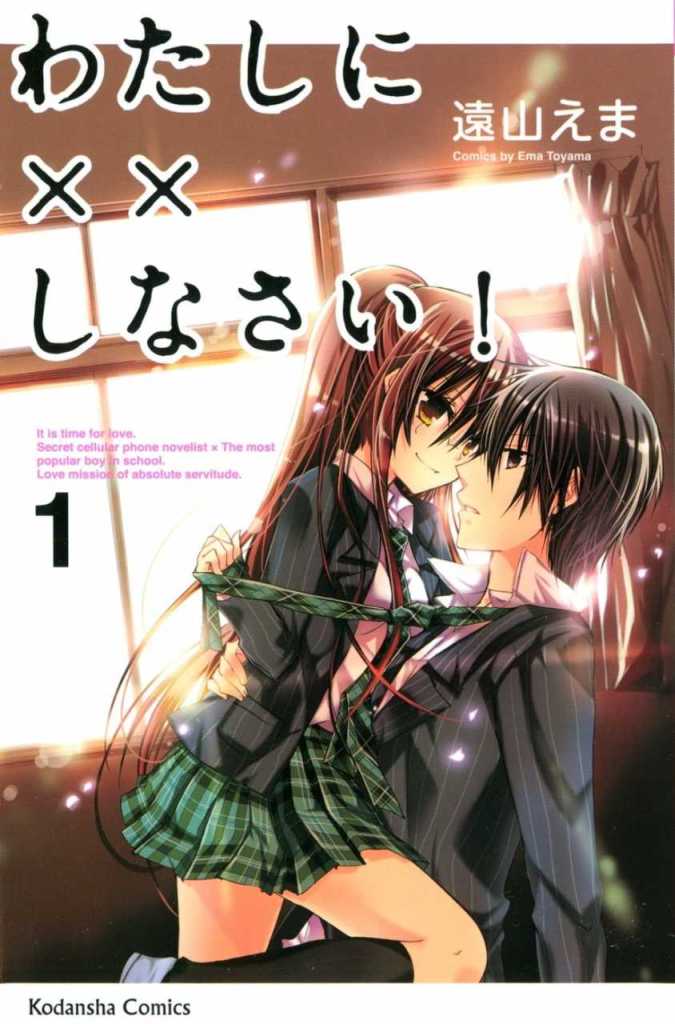
Cellphone vs Web Novel Ideology
The Cellphone novel ideology has not only influenced the culture of writing in Japan, but has also made its way into media as a popular pastime for teens. In the manga Watashi ni x** Shinasai!, the story revolves around the main character trying to make a name for herself in the cellphone novel world. When a situation in her novel causes her readers to comment on her lack of enthusiasm for “love”, she realizes that she has no experience in that field and therefore cannot write convincing scenarios! This leads her to ask a guy to pretend to date her, and of course some pretty funny and cute situations occur as you’d imagine. Seeing a trend here?
This inclusion of cellphone culture into anime and manga is pretty common and manifests itself in different ways. Another very popular example is Kaya from Bakuman (Takagi’s girlfriend). At some point she decides that she wants to write a cellphone novel and she ends up roping Takagi into helping her. Though in this particular case, it can be argued whether or not what she is writing is a cellphone novel. At least in the anime version, there are scenes clearly showing her writing large blocks of text on the computer – a trait common to web novels.
Web Novels And Light Novels

Similar in form to cellphone novels, web and light novels are a whole different subculture only tangentially related. Starting the discussion with light novels, Sonorama Bunko is said to have been the first publishing company to popularize them in the 1970s. Light novels are a type of novel written with chapters of 40,000 to 50,000 words in length, similar to novella in the west. Usually not more than a few hundred pages, they are published in bunkobon size (A6) and sold for around ¥500 – ¥600. Originally, light novels were an evolution of pulp magazines which had a classic style of short stories with the concept of “cheap paper, cheap printing, cheap authors, and interesting stories”.
Light Novel Culture
As the culture evolved, both web and light novels started to focus on teenageers and the younger audience, turning to popular genres such as young romance and the struggles of youth to grab their attention. At the same time, light novels also began to adopt the culture of manga and anime with their illustrations and topics to look visually appealing.
Still written as books, most light novels these days have themes and elements that will immediately remind you of anime. Because of that, in recent years many light novels have started to spin off anime and manga adaptations. Media companies are realizing that the depth of story and plot in these novels are now very relevant to the anime subculture and can be easily monetized. And since they’re still written, they can take advantage of all the hidden secrets of ateji in the Japanese language.
The only qualm I have with this is that there are certain studios which skimp out on the adaptations, thinking that it will achieve popularity as long as they incorporate a few main elements, even if it means leaving out all of the details. Sadly, Madhouse decided to go down this route with Mahouka Koukou no Rettousei and ruined it for many people. But with that said, anime adaptations of light novels have a pretty wide reach with varying quality and not all of them suffer in the same way – from novels written in the 1980s like Record of Lodoss War and Legend of the Galactic Heroes which emphasize sci-fi topics, all the way to more recent ones like The Melancholy of Haruhi Suzumiya and Sword Art Online.
Light Novels vs Web Novels
And on the topic of SAO, there is a small distinction to make between light novels and web novels other than the medium. As the name implies, web novel is the name for a novel which was originally written on the web on either a blog or personal website. Ever since the popularization the cellphone novels and internet MMS boards, web novels have become much more accessible to amateur writers which has been the cause for a lot of change.
Before, it was necessary to go through a publisher to spread your idea to the masses, but these days anybody can become an author. This not only resulted in more people writing novels, but also led authors to write more freely without being shackled down by the demands of their publisher. There are many writing contests such as Dengeki Novel Prize which sees over 6,000 submissions yearly, almost all of them amateur writers.
Popular Web Novels
I personally think web novels are some of the most interesting novels out there today, and I definitely suggest people try out at least one chapter. For those of you with no clue on what to read, try starting off with Utsuro no Hako to Zero no Maria. (A good place to check out translated and non-US licensed light novels is at baka-tsuki)
The disappointing part is that many of these anime-inspired novels from Japan are still untranslated, but I guess that just means I have to study more! FYI some examples of novels I am reading/plan to read are Usotsuki Mii-kun to Kowareta Maa-chan, Kuro no Hiera Glaphicos, and Monogatari Killer Killer.
Visual Novels
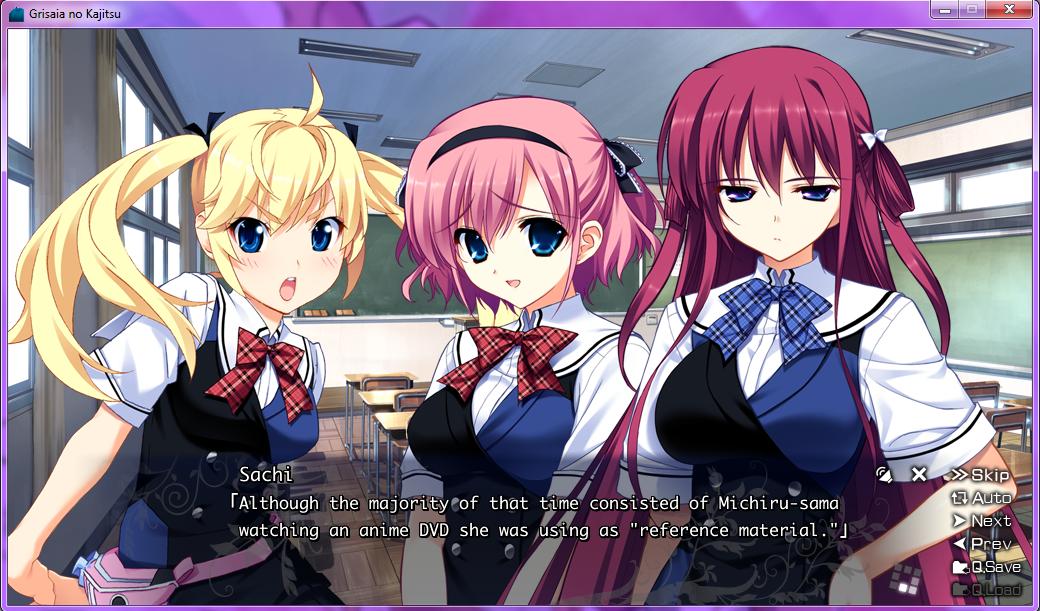
Ok, now we are finally at the last major form of (regrettably) unknown media: Visual Novels. Visual novels are probably the closest thing to anime these days, even more so than web novels – really a trade-off between light novels and anime. There is prose to read in short bursts as you click through the text with at least a basic form of character art/backgrounds. And that’s just the bare minimum – most show basic animation with background music as the text is updated and the occasional voice over will keep you deeply engaged.
History Of Visual Novels
As you can imagine, visual novels are a console and computer phenomenon introduced around the 1990s (there were similar games on consoles in the 1980s, but I wouldn’t call them visual novels -_-;;). People commonly refer to them as “pick your own adventure” novels, but that is a name which has the potential to cause a lot of confusion and misattributed ideas.
Compared to light novels, which are usually narrated in third person, visual novels tend to be in first person as the player is supposed to self-insert to make it feel more immersive. The writing style is probably closer to the cellphone novel style, but with a lot more planning to keep the big picture in mind. On top of that, the audio and visuals are timed to increase the effect of suspense and pull the reader in as if they were watching a very exciting movie, but with text filling in all of the necessary gaps that might be difficult to convey with animation alone.
Because of the gripping nature, visual novels are also very good candidates for anime adaptations. But even more care has to be taken when adapting it because of the non-standard methods that are sometimes utilized (like time loops, multiple endings, and changes in POV).
Visual Novels vs Light Novels
The first thing to note is that visual novels need not have any choices. It is important to realize that in Japan, there is a distinction between a visual novel proper which is mainly comprised of prose, and an adventure game (ADV or AVG) which has other elements of gameplay. Some visual novels are actually just a straight read-through or have very limited choices, my favorite being Saya no Uta with only 3 choices and 1 true route. With that said, many visual novels do have some sort of game-tree which is the result of the different storylines and choices. It is actually pretty surprising how different the game-trees can look like – some are like a root with a few branches, other are a root with multiple branches in close proximity, and some trees even have loops!
Eroge Visual Novels
There is also an important distinction between standard visual novels and eroges (short for Erotic Games). An eroge is a type of visual novel in which the main protagonist engages in lewd acts with the other characters in the story, typically after choosing the correct choices within a route in order to seduce or capture their heart. Many eroges are harem games, with each route leading to an end with a different girl. Most common anime adaptations of eroges typically choose one route to be canon (like Shuffle!), but there are a few that dedicate a few episodes to each girl/route (such as Yosuga no Sora) to give viewers the entire experience. I can’t really say which method is my favorite, but I definitely do get sort of angry when they pick the wrong girl to star in the “canon only” adaptations (read Clannad).
Visual Novel Studios
There are some pretty important visual novel studios to note for people interested in trying them out. My personal favorite is Nitro+ due to their deep, interesting, and very extraordinary plots often inspired by Lovecraftian themes. You may have heard of the lead writer, Gen Urobuchi, because of some more recent stories he wrote such as Puella Magi Madoka☆Magica. Some notable titles from them are the visual novels Steins;Gate, Phantom of Inferno, Saya no Uta, and the very recent movie Expelled from Paradise. Just to list a few other (still great) studios we have Key, 5pb., and Type Moon.
And in case you were wondering where to get translated visual novels, it’s tough to give a good recommendation on that mainly because it’s still a small sub-culture in the west. VNDB has a good repository of summaries, studios, types of media, and translation status, but in the end you will have to either buy them online.
So Now What?
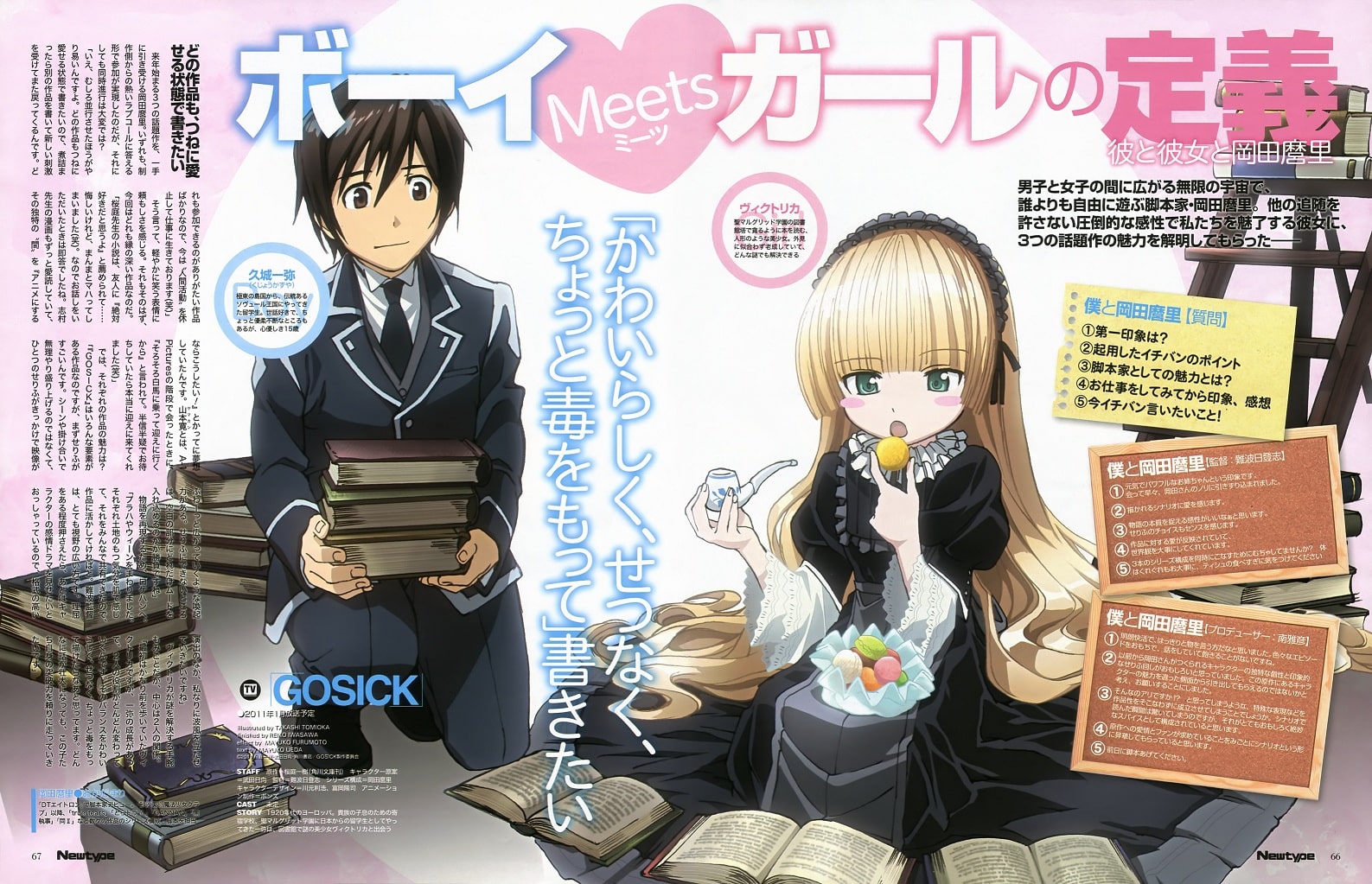
So there you have it! A pretty good introduction into the world of alternative media of otaku culture. It wouldn’t be a stretch to call these types of media absolutely necessary for the growth of anime and manga in general, and as a form of storytelling they are very solid pillars of modern culture. Anyways, don’t just take my word for it – go read something cool.
As usual, I’ll leave you all with a question: Do you have any cellphone novels, web novels, light novels, or visual novels to recommend to me? (I’m being selfish here) Reply back with your thoughts! And there is also a lot of work being done developing the stories for our original characters, so check in to see the status on that. I’m keeping hush on the exact form, but you’ll definitely like it so make sure to check out our new project at dereproject.com 🙂



